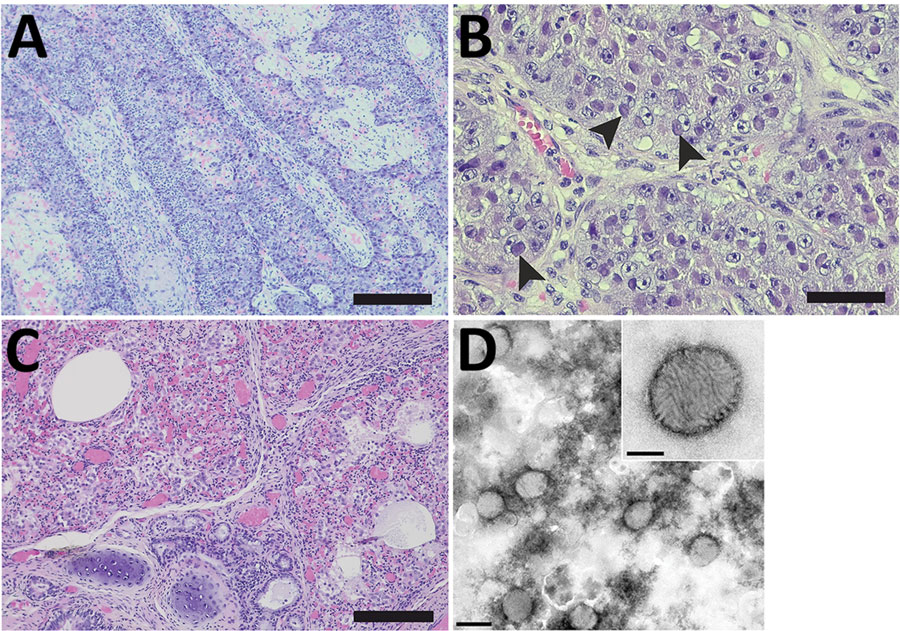Volume 29, Number 6—June 2023
Dispatch
Detection of Novel Poxvirus from Gray Seal (Halichoerus grypus), Germany
Figure 1

Figure 1. Histopathology and electron microscopy of nodules and lung tissue from a gray seal (Halichoerus grypus) with novel poxvirus, North Sea, Germany. A) Histopathology of nodules shows severe papillary epithelial hyperplasia with infiltration of neutrophils. Scale bar indicates 200 μm. B) Histopathology of ballooning degeneration of epithelial cells. Arrows indicate large eosinophilic intracytoplasmic inclusion bodies. Scale bar indicates 50 μm. C) Histopathology of the lung shows multifocal moderate pneumonia with infiltration of mononuclear cells and neutrophils with proliferation of pneumocytes type II and intra-alveolar histiocytosis, severe atelectasis, and hyperemia. Scale bar indicates 100 μm. D) Negative-contrast electron microscopy of lung tissue. Microscopy revealed poxvirus-like viral particles. Scale bar indicates 300 nm. Inset: closeup of poxvirus-like particles, which had an oval shape ≈250 nm × ≈200 nm and an irregular surface with randomly arranged tubular structures; scale bar indicates 100 nm.